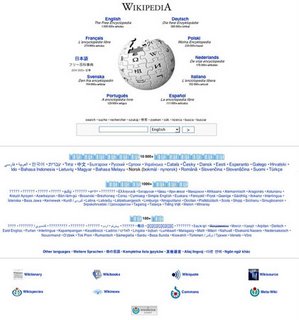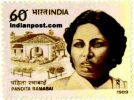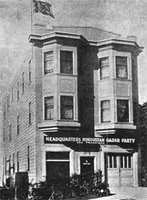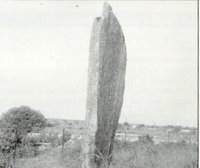Sources on 1857 (H-Asia Discussion)
The one hundred and fifty anniversary of Uprising of 1857 by Hindustanis (presently Bharta/India) falls in 2007. It is believed that the Indians celebrated the fiftieth anniversary of the 1857 as the anniversary of the First War of Independence for India in the year 1907. That was the period of the heightened national urges of the Indian Middle Class. It started from 1905 with Wang Bang Movement. Later V. D. Sarvarkar had published the book in which he had declared it as the First War of Independence. In 1958, S. B. Chaudhari declared it as a Civil Revolt and it was included as such in the eleven volume history of India edited by R. C. Majumdar. He did not accept that it should be called the First War of Independence. However, Majumdar, accepted it as the greatest movement of the expression of Indian Nationalism. The Marxist historians also identified it as a turning point in the Indian history. They ideological frame work located in this event as a Social Revolution in the writings of P. C. Joshi.
On the whole, there is attentive interest in this event as the year 2007 is approaching. In India, ICHR has already announced a conference for this event. On H-Asia list, this event has been is topic of discussion, queries and comments. It seems that every year, one or the other scholar on the list, regardless of the continent where he or she is residing finds interest in it and seek the help of the community on the H-Asia list to settle his or her query or a requirement.
It is other thing, that when a movie on Mangal Pandey was about to be released in India as well as on other continents, a query came on the list and the professor Emeritus Franck Conlon commented "Just in case the name Mangal Pandey does not awaken immediate recognition in all H-ASIA readers' minds, it may be noted that he was a member of the 34th Native Infantry of the East India Company's Bengal Army and is often identified as having fired 'the first shot' of the mutinies and rebellion of 1857 in late March, 1857, although the primary outbreak of violent resistance did not occur until May of that year." It was his response as an editorial report to a query by Prof. Vincent K. Pollard who had been activitely commenting on the online sources especially on the history contents on Wikipedia.
I have been collecting the emails in a separate folder on the subject of 1857. This year a query came on H-World list which was borrowed by H-Asia editors. It elicited a great response. It fascinated Ian Welch from Canberra that he could not stop himself in remarking as follows:
"I was a bit surprised with the original enquiry but responses like this are a reminder, if we need one, just how valuable H-Net (and of course H-Asia) can be. This is a superb example of mutual help and assistance."
Well, that is an appreciation for H-Net activity which was nicely acknowledged by H-Asia. It, on the other hand, also suggests that there had taken place some really useful activity. Yeah, indeed, it had been a fine activity. That is other thing that my suggestions were not included but those which had been shared are worth sharing with the rest of the people who do not visit H-Net or are not on the list.
I will first like to reproduce the sources recommended by Jyoti Mohan, Ph. D Candidate with University of Maryland. He had classified his bibliography into three sections viz. General Resources which some of them are even available online (But he not given the links.), Views of Indians, Classical Novels and Movies. May be it forms the part of some research work being undertaken by Jyoti Mohan. The books, diaries, journals and articles as suggest by him are reproduced after bit pruning. Actually he has not rightly distributed the titles under the each section as some foreign authors are also included in the Indian View section.
The books as suggested by Jyoti Mohan are:
1. Ouvery, M. H.: A Lady’s Diary Before and During the Indian Mutiny. This book is available on Google Books.
2. Memorandum from Lieutenant-Colonel W. St. L. Mitchell (CO of the 19th BNI) to Major A. H. Ross about his troop's refusal to accept the Enfield cartridges, 27 February 1857, Archives of Project South Asia, South Dakota State University and Missouri Southern State University. (online). But the link is not given.
3. Raikes, Charles: Notes on the Revolt in the North-Western Provinces of India, Longman, London, 1858.
4. Russell, William Howard, My Diary in India in the years 1858-9, Routledge, London, 1860, (2 vols.)
5. Trevelyan, Sir George Otto, Cawnpore, Indus, Delhi, (first edition 1865), reprint 2002.
6. Innes, Lt. General McLeod: The Sepoy Revolt, A.D. Innes & Co., London, 1897. Fitchett, W.H., B.A.,LL.D., A Tale of the Great Mutiny, Smith, Elder & Co., London, 1911
7. Khan, Sir Syed Ahmad, Asbab-e Baghawat-e Hind 1859; Translated as The Causes of the Indian Revolt, Allahabad, 1873.
8. Pandey Sita Ram, From Sepoy to Subedar, Being the Life and Adventures of Subedar Sita Ram, a Native Officer of the Bengal Native Army, Written and Related by Himself, trans. Lt. Col. Norgate, (Lahore: Bengal Staff Corps, 1873), ed. James Lunt, (Delhi: Vikas Publications, 1970).
9. Sen, Surendra Nath, Eighteen fifty-seven, (with a foreword by Maulana Abul Kalam Azad), Indian Ministry of Information & Broadcasting, Delhi, 1957.
10. Barter, Captain Richard The Siege of Delhi. Mutiny memories of an old officer, London, The Folio Society, 1984.
11. Wilberforce, Reginald G, An Unrecorded Chapter of the Indian Mutiny, Being the Personal Reminiscences of Reginald G. WIlberforce, Late 52nd Infantry, Compiled from a Diary and Letters Written on the Spot London: John Murray 1884, facsimile reprint: Gurgaon: The Academic Press, 1976.
12. Sir John Kaye and G. Malleson, History of the Indian Mutiny (6 vol., 1896)- stated the official view. It can also be identified as the traditional primary source.
13. T. P. Holmes, History of the Indian Mutiny (3 vol., 1904-12).
14. Christopher Hibbert The Great Mutiny (London: Allen Lane) 1978- classic history
15. Taylor, P. J. O., What really happened during the mutiny : a day-by-day account of the major events of 1857 - 1859 in India, Delhi, for the Oxford University Press, 1999. This book has been included in the bibliography of many courses as displayed on the net by different universities.
16. Seema Alavi The Sepoys and the Company (Delhi: Oxford University Press) 1998
17. Nancy Paxton's Writing under the Raj: Gender, Race, and Rape in the British Colonial Imagination, 1830-1947 (Rutgers, 1999) has a section on Mutiny writings. This another book which have found regular mention on the courses displayed online.
18. Farrell, J.G. "The Siege of Krishnapur", New York Review of Books, 2004. The only novel suggested by Jyoti Mohan.
The next book which was mentioned by Lakhshami Subramaniam was a book by Rudrangshu Mukherjee on Mangal Pandey. I have read this book. However, an interview of Mukherjee is available on the net in which he passed a scathing judgement on the status of Mangal Pandey as a hero of the revolution. He arguments are not convincing. I have written few articles on Bindee Tiwari. During the course of the research on Bindee Tiwari, I had come across many sources now available online, in which the role of the sepoys of 34 Native Infantry had been shown in contemporary records. The contents of those sources do not vouch for the conclusion of Mukherjee.
Another sources which had been brought the attention of the List members was an online sources by Adam Mathew Publishers at http://www.adam-matthew-publications.co.uk/index.aspx. This seems to be a paid site. I made two or three attempts to enter into the sources which are claimed to be the reports, letters, diaries etc under a title India during The Raj: Eyewitness Account. I was not successful. It was suggested by Raymond Lum of Harvard University Library.
The next seemingly quite useful sources are suggested by William Pinch who signs as Vijay Pinch and belongs to Wesley University!! He suggests following sources:
1. Selections from the letters, despatches and other state papers preserved in the Military department of the government of India, 1857-58_. 4 vols. Edited by Sir George Forrest. Calcutta: Military Dept. Press, 1893-1912.
2. Freedom struggle in Uttar Pradesh_. Ed. S. A. A. Rizvi and Moti Lal Bhargava. 6 vols. Lucknow: Publications Bureau, Information Dept., Uttar Pradesh, 1957-1961. [Contents: v. 1. 1857-59; nature and origin.--v. 2. Awadh: 1857-59.--v. 3. Bundelkhand and adjoining territories, 1857-59.--v. 4. Eastern and adjoining districts, 1857-59.--v. 5. Western districts and Rohilkhand, 1857-59.--v. 6. Consolidated index and chronology
3. Annals of the Indian rebellion, 1857-58; containing narratives of the outbreaks and eventful occurences and stories of personal adventures, compiled by N. A. Chick.
Then comes the name of Jason Freitag of Ihaca College. He has mentioned the latest by titled "The Last Emperor" by William Dalrymple. I have already written some observation on the interview by the author and the reviews which he is receiving for his work. However, I have yet to read that book. However, Freitag suggests following sources:
1. Barbara Harlow and Mia Carter (eds) Archives of Empire, Volume 1: From the East India Company to the Suez Canal, Duke Univ. Press (2003).
2. He has given online link Western Intrusion available at URL: Internet Indian History Source Book (Quite popular)
Sumit Guha, presently the Director of South Asian Studies Program, New Jersey, who is regular contributor to the list especially in the Review section has given equally elaborate list. The list makes more sense as most of the book mentioned there are readily available in major libraries in India as well as some of them are available on bookstores. The list is quite long and kindly read it below.
1.S.A.A. Rizvi ed. _Freedom Struggle in Uttar Pradesh - Source Materials_ Kanpur: Uttar Pradesh government 1957. Six volumes of very valuable records, with photos of proclamations and farmans in Persian and Urdu.
2. G.W. Forrrest ed. _Selections from the Letters Despatches and Other Records in the Military Department of the Government of India 1857-58_ Calcutta: Military Department Press 1902 4 vols. Very valuable including intelligence reports, depositions, diaries and court records.
3. N.A. Chick _Annals of the Indian Rebellion 1857-58; cotnaining narratives of the outbreaks and eventful occurrences and stories of personal adventures_ Reprint, London: Charles Knight 1974.
4. [British parliamentary papers] _Accounts and Papers, Session 2 1859, vol XXV East India: The King of Delhi_ This contains the English record of the proceedings at the month-long trial of the Mughal Emperor, Bahadur Shah, including documents and writtena nd oral testimony of witnesses.
5. Godse, Vishnubhat _Majha Pravas_ reprint Pune: Venus PrakashanMarathi narrative written 1885-6 by a Maratha Brahman who was in Kanpur and Jhansi in 1857-59 and narrowly escaped with his life. To my (Sumit Guha’s) knowledge the only voluntarily-written full-length account from the defeated side.
Sumit Guha had further made a remark that Dr. Joseph Coohill had placed another list. However, I have not been able to locate that list. May be, I have missed that list during problem which the H-Net faced during the month of October and flood of Review entries.
Kama Maclean of University of New South Wales has tried to substantiate the list of Sumit Guha by suggesting the title Muir William _Records of the Intelligence Department of the Government of the North Western Provinces of India during the Mutiny of 1857 -, (Edinburgh, Clark, 1902). I am personally very much interested in looking in this source because it is said that these reports contain some references to "Lotus" and "Chapati" Saints. These references are important because there is a theory that this event was not a sudden occurrence. There was some secret plot behind this uprising.
Then there was a collective mail of four responses. That mail consisted of following references.
1. Jeremy Neil of Menlo College suggested Samson’s "The British Empire". It has been suggested as a primary source.
2. Marc Gilbert of Hawaii Pacific University had tried to touch actual verve of this whole issue by ending his recommendations by the call "Challo Delhi". The list provided is long and reproduced in its original diction.
"Ainslee Embree, The War of 1857 is the standard indispensable collection for historiographical study. No South Asian historian is without it, and it is useful."
I am afraid that I have never head about this source and so I have not read anything about it. May be, I have yet to learn more about 1857.
Apart from that Gilbert had suggested Stokes Eric’s "The Peasant Armed: The Indian Revolt of 1857".
In addition to that he had given some online links which are as follows:
Sepoy War of 1857 (Contains sections covering all the counter arguments)
3. Tania Boster, a Ph. D Candidate of University of Pittsburgh "Patrick Tuck, ed. _The East India Company:1600-1858_ (London: Routledge, 1998)" and bibliography of Sudipta Sen's _Empire of Free Trade: The East India Company and the Making of the Colonial Marketplace_ (Philadelphia: University of Pennsylvania Press, 1998.
4. The fourth one of Jason Freitag had already appeared as separate mail and here it had again reappeared. It seems it creeped in somehow.
Finally I have also provide further information as follows:
I have posted some write ups on my blog wherein I have given links of the online sources also. Well, there is no write up directly related to 1857.However, in some articles there are reference or relation to 1857. Whilewriting those articles I have used many online sources which are given links there. If permitted, I will like to present following details.
Recently, a new book is published by Darlymple titled "The Last Mughal". In an interview to BBC, he claimed that he had based his research on 20000 original documents written by sepoys and available in National Archives of India. There in he had talked about Jihad by Muslim during the Uprising, the killing of Christian converts during the May 1857 killing in Delhi and use of Din and Dharma views by the sepoys in the letters as well as before the various inquiry committees. The review of this book has been published in Independent and also available at Fall of a Chessboard King. Another comment is at The Latest Last Mughal Arriving in India in October. Further the comment on Vellore Revolt also contains some links at Looking at Indian History through Vellore Revolt. Similarly on 1824, some online sources for period before 1857 is used at Quasi Mutiny of 1824. On this very link, there is link to Barrackpore Cantonment wherein original Municipal Board Meetings Minutes are given. They are from 1876. However, there is reference to Prostitution in Barrackpore and the concern of Calcutta about it. It makes an interesting reading because the revolt at Barrackpore has reference to the participation of the prostitutes of Barrackpore in the revolt. This is actually placed on my blog but not directly related to 1857 but the theme is same.
Here, I will like to mention a movie released in 2005 titled The Rising:Ballad of Mangal Pandey at Mangal Pandey at IMDB. It has also touched upon the issue of Chappatti and Lotus Mystery.
Some of the Social Scientist Journals available online at Social Scientist online can also be useful. But for that, one has to check each copy available online.
Similarly there is another review by V. N. Datta about a book with same title "The Last Mughal" given which is commented at Using Historiography to emphasis an Ideological Stand.
One can also check Digital Colonial Documents. It has links to some of the reports before and after 1857.
Another good book on Guttenberg Guttenburg Link HERE Forty One Years in India by Field Marshal Lord Roberts, Richard Bentely, London, 1897. It gives good picture of Calcutta before 1857.
One can also check the link of University of California at
There are some original sources on inquiries committees. While collecting it from my dump, I am not able to locate it. But if I remember it right, then it is one of the University of UK with separate section of on South Asia, that has placed some original archival sources dealing with inquiries committees on different Infantry Battalions. It can be located.
Well, I will like to mention British Paramountcy and Indian Renaissance Part I V IX by R. C. Majumdar as good source for it. Another book is Other Side of the Medal by Thompson, which can be included in the list. More sources can also be located and they are available online.
However, I will like to suggest that Vellore Revolt and 1824 Revolt should also be included in order to study 1857 as Professor Taylor suggested that they want to pick topics with which the students are not familiar. One topic, that is prostitution in Barrackpore in sixties and seventies as mentioned above can be quite useful.
Before signing off, I must add that the list given above along with online links may suggest that there are enough sources available on Indian history. However, this will be a wrong judgement. There is no doubt, that there are many sources available online. But incase of Indian history, the Universities and organization which are outside India make all such sources available. There are some sources on Ancient literature like Veda, Upnishadas, Puranas and various tikkas made available by Indian based institution. However, such sources have not found any attention from the people of history. In future, I will bring a list of such sources on this very blog.
Source Acknowledgement:
Email List H-Net at











